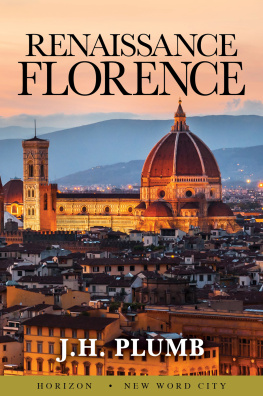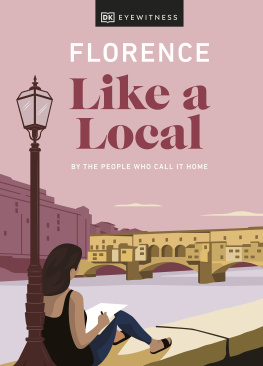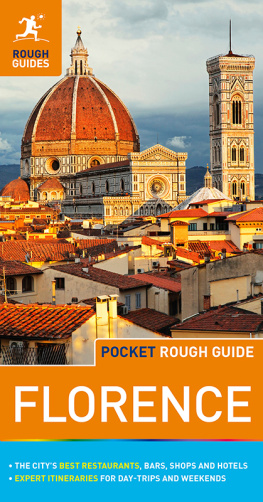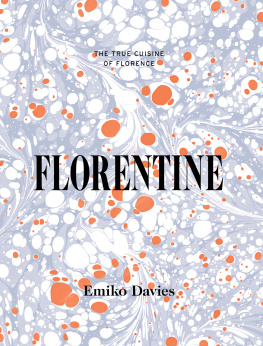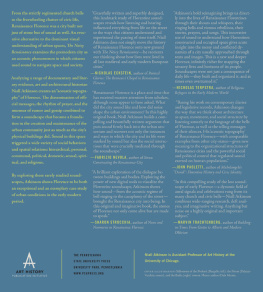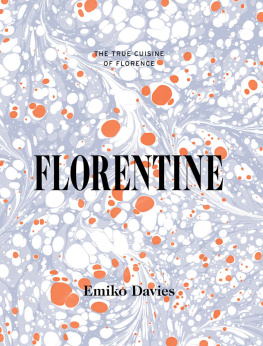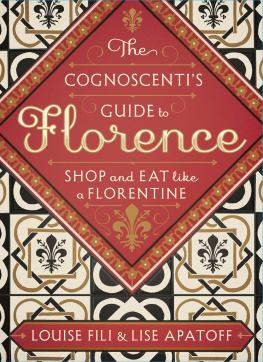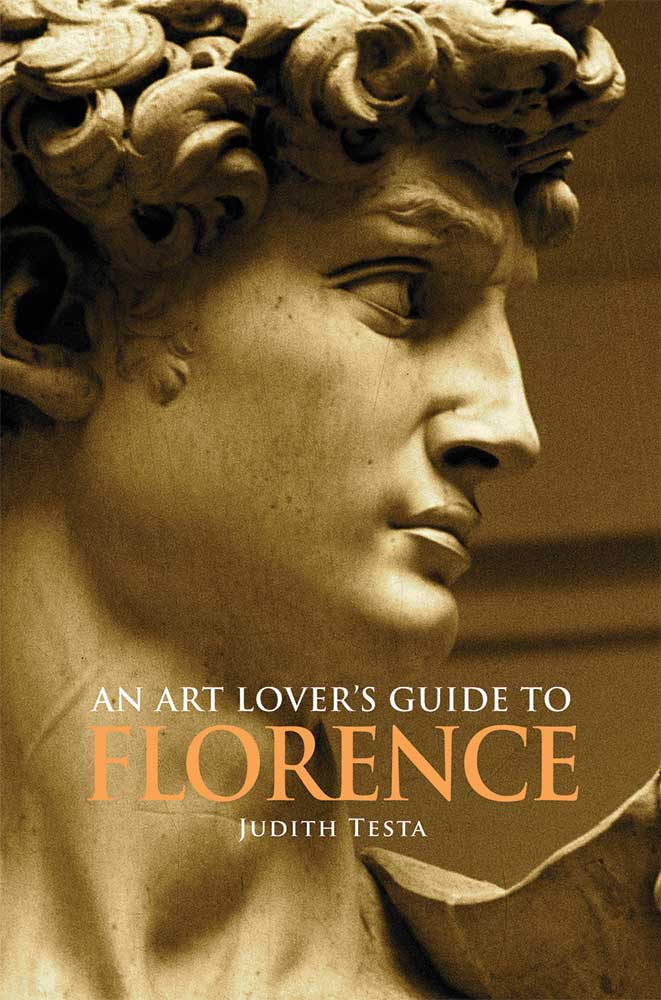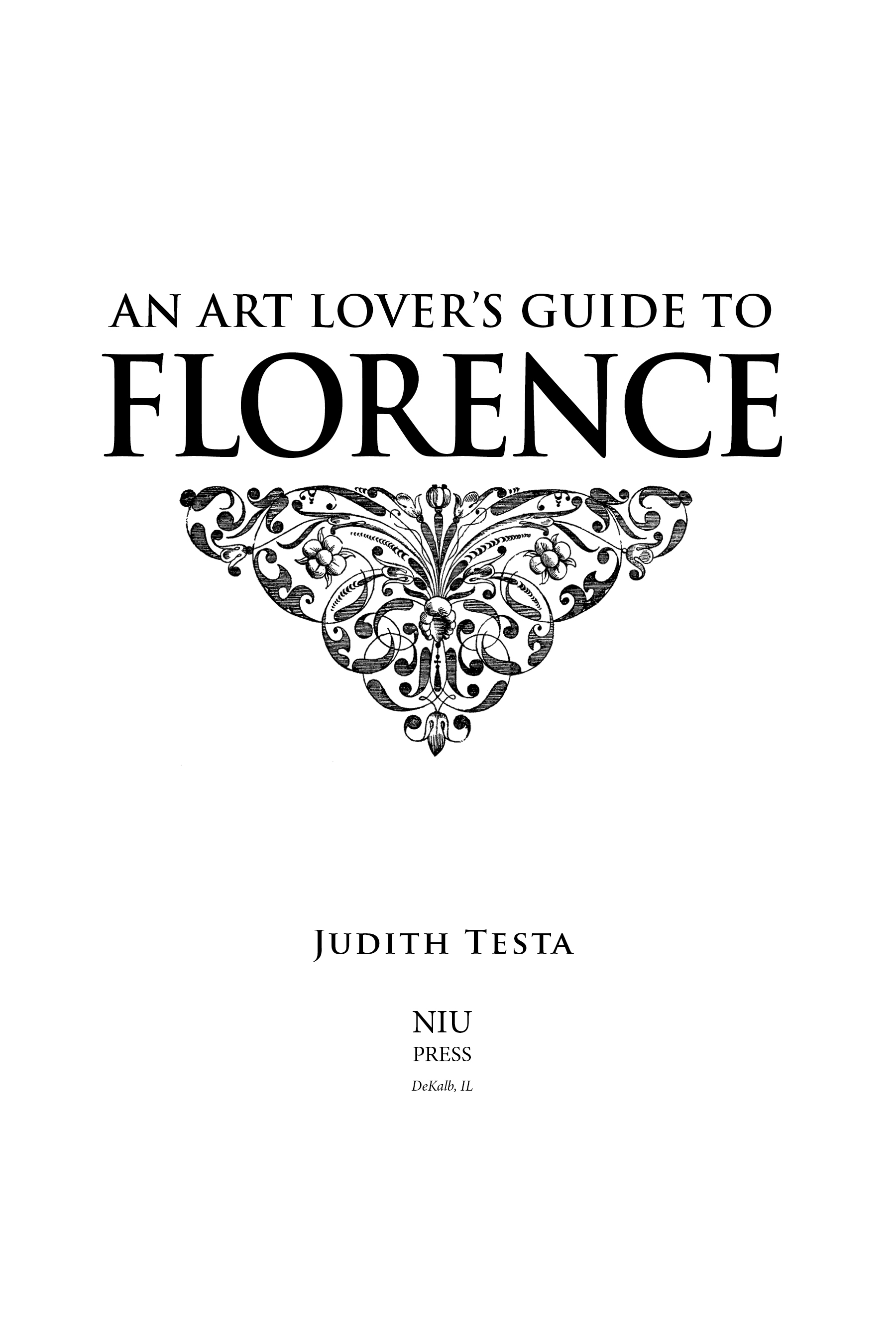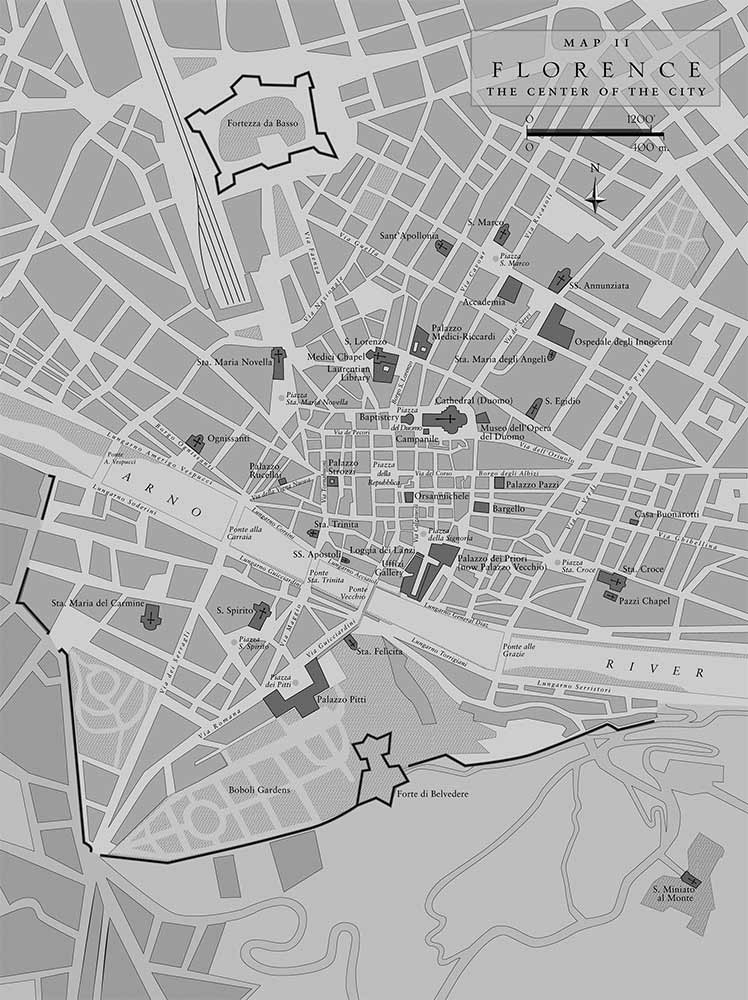2012 by Northern Illinois University Press
Published by the Northern Illinois University Press, DeKalb, Illinois 60115
Manufactured in the United States using acid-free paper.
All Rights Reserved
Design by Julia Fauci
Library of Congress Cataloging-in-Publication Data
Testa, Judith Anne, 1943
An art lovers guide to Florence / Judith Testa.
pages cm
Includes bibliographical references and index.
ISBN 978-0-87580-680-8 (pbk. : alk. paper) ISBN 978-1-60909-063-0 (e-book)
1. Art, ItalianItalyFlorenceGuidebooks. 2. Art, RenaissanceItalyFlorenceGuidebooks. 3. Florence (Italy)Guidebooks. I. Title.
N6921.F7T47 2012
709.45511dc23
012005427
M ap (page 2)Hartt, Frederick; Wilkins, David, History of Italian Renaissance Art, 7th Edition, 2011, p. 13. Reprinted by permission of Pearson Education, Inc., Upper Saddle River, NJ
Contents
Chapter 1
Chapter 2
T he Cupolone and the Condottieri
Chapter 3
Chapter 4
W here Renaissance Painting Was Born
Chapter 5
P ower Politics and Sexual Politics in the City Center
Chapter 6
A Multipurpose Architectural Masterpiece
Chapter 7
E uropes First Foundling Hospital
Chapter 8
P iety and Politics in a Cloistered World
Chapter 9
Chapter 10
G iovanni Rucellai and His Family Palace
Chapter 11
P olitics, Religion, and Personal Reputation
Chapter 12
Chapter 13
T he Building and Some Highlights of the Collection
Chapter 14
Chapter 15
M ichelangelos David
Chapter 16
T he Tragedy of Time in a Time of Tragedy
O n a visit to Florence some years ago, I spotted a man carrying with him a list of the most important works of art to be found in the city. At the top was his title: MASTERPIECES CHECKLIST. When I asked him how he used this compilation, he explained that he was locating the works on his list, glancing at them, making a check mark next to their names, and then moving on. He shrugged regretfully, as if to say: too much art, too little time. If there was ever a way for an art lover not to see the great art of Florence, this gentleman had hit upon it. Great works of art deserve more than a cursory glance.
But where to begin? What works should the visitor stop and really observe? No city other than Florence contains such an intense concentration of art produced in such a short span of time: from the 1300s through the1500s. The sheer number and proximity of works of painting, sculpture, and architecture in Florence can cause visitors who try to see them all to experience an artistic overload labeled in the 1980s by Italian medical researchers as Stendhals Syndrome. Named after the nineteenth-century French author who first described it, the malady consists of symptoms such as dizziness, panic, confusion, fainting, and overwhelming exhaustion caused by trying to see too many works of art in too short a time. Although this may sound like a joke, Florentine hospitals treat hundreds of visitors each year for these symptoms. A visit to Florence, whether brief or extended, should be enjoyable, exciting, and inspiring, not bewildering and exhausting. Armed with an idea of which works to see, along with information about them and no obligation to see everything, the visitor can successfully navigate the Uffizi and the Bargello museums, as well as the citys streets and piazzas, churches and palazzos.
In the course of teaching university classes that covered Renaissance art in Florence, I naturally had to be selective, confining myself to the greatest works of the period andoften with regretomitting others both interesting and worthwhile but that would not necessarily have made it onto a Masterpieces Checklist. As I continued to study and teach the artistic history of this astoundingly rich period, I came to realize that the major works of art always fell into two, and sometimes all three, categories of religion, politics, and sex. Although most works are religious in content, they almost always have some political dimension, and a few of them also contain a sexual content at times ignored or minimized by those who write about them.
The purpose of this book is to offer art lovers a fresh perspective on the rich and brilliant art of the Florentine Renaissance by presenting it in terms of three basic human concernspolitics, sex, and religionbecause all of them inform Renaissance art. During that period, art was not something separate from life, on display merely to be admired. It was a part of peoples lives, bound up with both their public and their private experiences. Those three words, politics, sex, and religion, often conjoined in our time to indicate topics better not discussed in polite company for fear of causing arguments or offense, are nonetheless powerful forces in every society, and they often manifest themselves in works of art. So why not acknowledge all of them in the discussion of Renaissance art? These different meanings often intertwine in the great artworks of Florence, and awareness of this intermingling of meanings can deepen the visitors pleasure in viewing those works.
Politics is here defined in the broadest sense, not as political parties with narrow competing interests and philosophies of governing (although there was no lack of that kind of factionalism in Renaissance Florence) but more in its original sense of civic politics, that is, matters applying to the polis or city-statein this case the republic, and later the duchy, of Florence. In an era when no clear separation of church and state existed, its not surprising to find religious art commissioned by secular individuals and institutions and imbued with their political goals. To some degree, all art exists within the political sphere defined in this way, although its not necessarily limited by it, and great art transcends the temporal political situation for which it was created.
What may be more surprising to modern viewers of art in Florence is how openly sexual certain works of art are, and how cleverly artists and their patrons used sexual themes for political purposes. That religious art can often have a political meaning hardly comes as news to scholars of Renaissance art, and many guidebooks at least pay lip service to noting the political aspects of so much of the art of that period. But dealing with the sexual level of meaning in works of artsometimes obvious and explicit and at other times hidden or disguisedis another matter. Guidebooks generally steer clear of it, and a surprising number of art historians also prefer to omit or dismiss the topic, even when doing so means to ignore important aspects of the works under discussion. I believe that discussion of the sexual level of meaning in certain works of art is important, and that exploring it can help the viewer reach a fuller understanding of those works. The sexual significance of artworks can be discussed without being offensive or disrespectful toward the other levels of meaningincluding in some cases the religious meaningof those works.
It is amazing, for example, how many scholars have passed over in silence the sexually explicit gesture of Titians Venus of Urbino, the relationship of Michelangelos personal passion for the male body to his magnificent marble statue of David, and the homoerotic implications of the feathery wing of Goliaths helmet that crawls up the inner thigh of Donatellos bronze David with the Head of Goliath . Certain scholars fly into a rage at the mere mention of the homosexual aspects of that work. Few scholars acknowledge that Botticellis seemingly dream-like Primavera may offer specific and very different sexual lessons to male and female viewers. Some of the sculptures located in the secular space of the Piazza della Signoria show politics, religion, and sex interacting in surprising ways, but most scholars ignore the web of desire and violence (to borrow art historian Frederick Hartts phrase) that entangles three of the figure groups displayed there: Donatellos Judith Beheading Holofernes , Cellinis Perseus and Medusa , and Giambolognas Rape of a Sabine Woman all works of art intended for public viewing around the political center of Florence.


